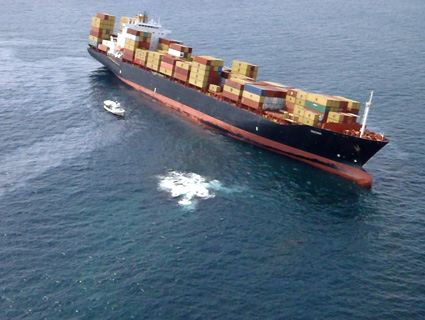The Brazilian environmental agency announced it will fine Chevron nearly $28 million—the most allowable under Brazilian law—for the spill underway off the Brazilian coast since 7 November.
Chevron accepts responsibility for the leak, which it says was caused by an underestimation of the pressure in the oil reservoir, plus an overestimation of the strength of the rock containing the reservoir. Chevron’s drill operator is Transocean, Ltd, the same driller for BP’s Deepwater Horizon rig. Chevron’s version of how the problem unfolded, via AP:
The drilling fluid that is pumped down the center of the drill as it works, lubricating and stabilizing the pressure of the bore hole, was not heavy enough to counter the pressure coming from the oil reservoir… That caused crude to rush upward and eventually escape through a breach in the bore hole and leak into the surrounding seabed. The oil then made its way to the ocean floor and has since leaked through at least seven narrow fissures, all within 160 feet (50 meters) of the well head on the ocean floor.
Reuters reports the leak occurred so far from the drilling platform that Chevron originally thought the spill was from a platform or pipeline owned by Brazil’s state-controlled oil company, Petrobras. Chevron was eventually informed of its own leak by Petrobras.
The deep reservoir that Chevron and others are working may hold 100 billion barrels of oil or more, enough to supply the whole US, the world’s largest oil consumer, for 14 or more years. However the reservoir is buried under waters 2 miles deep and under (weak?) rock another 2.5 miles below that—in Chevron’s case, at least, too deep for safe engineering.
The combination of the high-pressure reservoir, weak rock, and a leaking seabed sounds ominous for any hope of quick containment.





